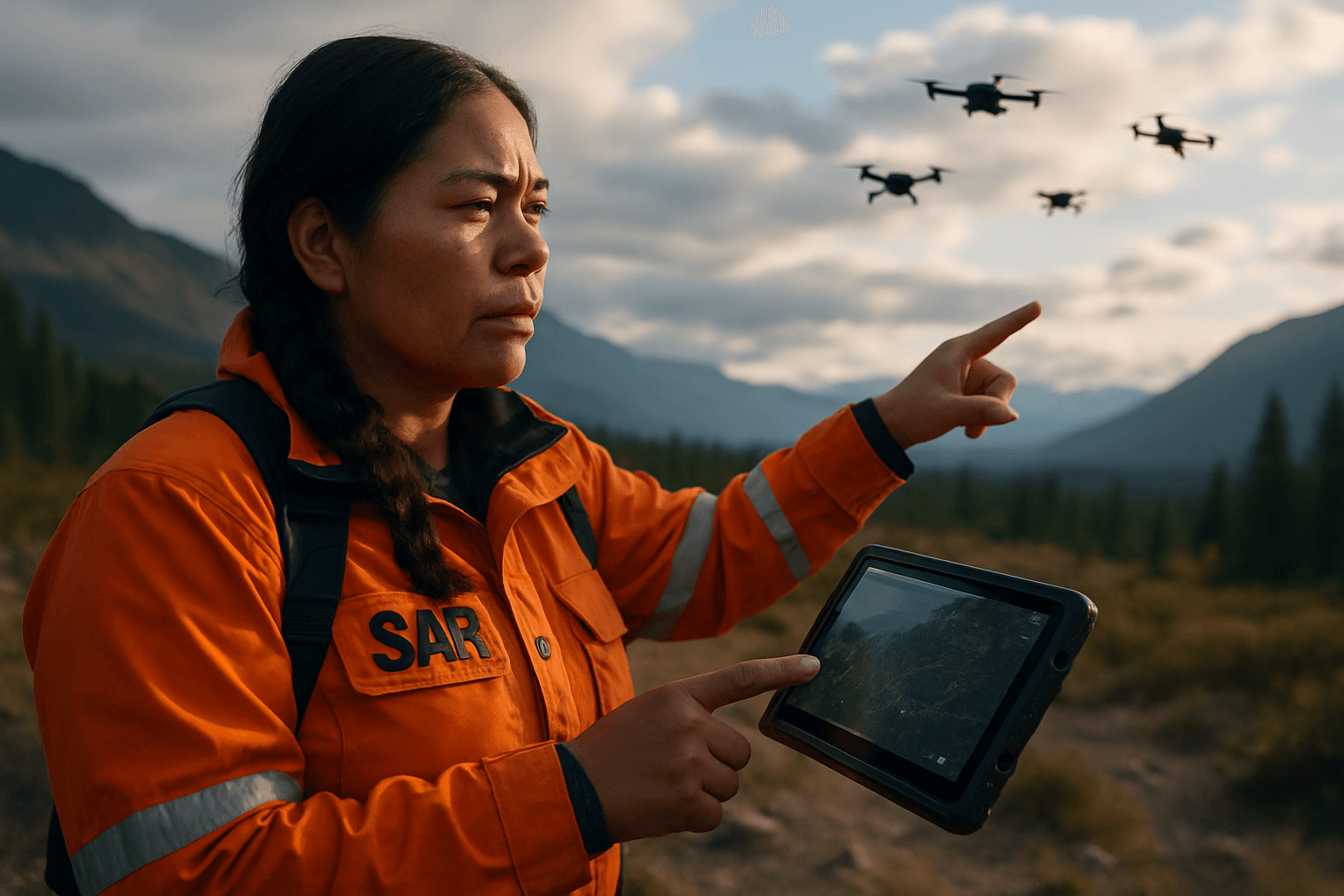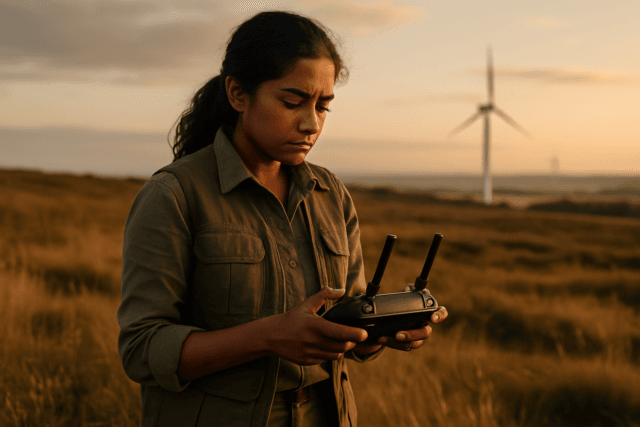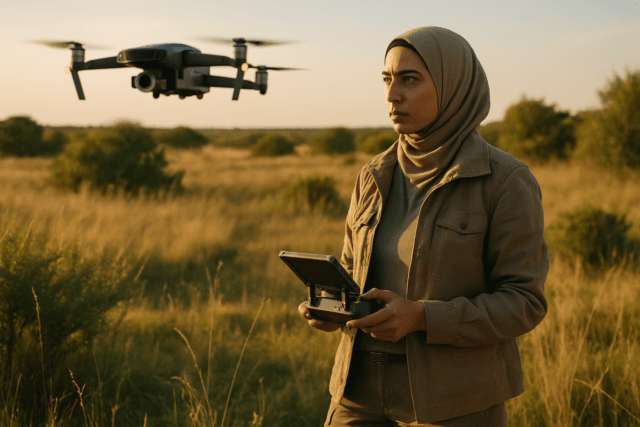The landscape of search and rescue (SAR) operations is being reshaped by the transformative potential of drone swarms. These coordinated groups of unmanned aerial vehicles (UAVs) offer unprecedented capabilities for rapid, efficient, and comprehensive coverage of expansive and often challenging environments, significantly enhancing the effectiveness of locating and assisting individuals in emergency situations. The shift from single drones to swarms necessitates a reimagining of rescue missions, driving innovation in several key areas.
The Power of Collective Intelligence: Why Swarms Matter
Unlike a single drone, a swarm can divide a large search area into smaller, manageable sections, with each drone systematically surveying a specific zone. This parallel processing approach allows for a comprehensive sweep of the terrain in a fraction of the time it would take using conventional techniques, drastically reducing the critical time to locate survivors. Drone swarms also offer persistent monitoring, with individual units returning for recharging while others maintain the search effort, ensuring an uninterrupted operation. This collective intelligence enables more effective and targeted search efforts.
Key Emerging Trends in SAR Drone Swarming
The evolution of drone swarming for SAR is marked by several significant technological advancements and operational shifts.
Advanced AI and Machine Learning for Autonomous Operations
Artificial intelligence (AI) and machine learning (ML) are at the heart of the latest advancements in drone swarming. AI algorithms enable drones to make autonomous decisions, adapt to changing situations, and coordinate seamlessly without constant human intervention. This includes capabilities such as real-time data analysis, pattern recognition to identify survivors or hazards, and the ability to predict potential movement patterns of lost individuals, optimizing search paths. AI-powered autonomy allows swarms to operate efficiently even in complex, dynamic environments, reducing the need for continuous human control.
Enhanced Communication and Collaborative Intelligence
Effective communication is pivotal in disaster scenarios, and drone swarms are leveraging advanced protocols for seamless information exchange. AI facilitates communication among drones, allowing them to share real-time information such as search progress, detected obstacles, and survivor sightings. This collaborative approach ensures that drones cover large areas efficiently, avoid redundancy, and respond rapidly to emerging situations. The integration of high-speed communication technologies like 5G and future 6G networks promises ultra-low data transmission latency, enabling drones to stream high-resolution visual and sensory data simultaneously. This ensures reliable links with nearest neighbors and minimizes communication delays.
Sophisticated Sensor Integration
Drone swarms are equipped with a diverse array of advanced sensors, providing a multi-modal approach to data collection that surpasses the capabilities of a single drone.
- Thermal Imaging Cameras: Crucial for spotting body heat signatures, even when survivors are hidden under rubble or dense foliage.
- High-Resolution Visual Cameras: Capture detailed imagery for assessing damage and identifying critical areas.
- Advanced Audio Sensors: Can pick up faint sounds or cries for help in challenging environments.
- Lidar and Collision Avoidance Sensors: Enable precise navigation in complex environments and ensure safe distances between drones, enhancing responsiveness and reliability.
- Chemical Detectors: Specialized sensors for detecting hazardous materials in disaster zones.
Adaptive and Resilient Swarm Architectures
The emerging trend focuses on creating robust and fault-tolerant swarm systems. If individual drones become inoperable, the swarm can adapt and continue its mission, ensuring resilience in critical operations. Research is also exploring how multi-drone systems can be integrated into existing SAR procedures with increasing levels of autonomy, allowing the system to make its own decisions while the human operator acts as a supervisor. This includes self-organization algorithms that allow drones to adapt to environmental changes and restore connections, ensuring mission execution even with connection losses.
Temporary Communication Relays
Natural disasters often disrupt communication networks, isolating affected regions. AI-integrated drone swarms are emerging as a solution by acting as temporary communication relays. They can restore connectivity for rescue teams and survivors, establishing real-time links to share critical information like weather updates, resource needs, and evacuation routes, ensuring seamless coordination among response units. This capability is vital for maintaining situational awareness and guiding rescue efforts.
Opportunities and Challenges
While the benefits of drone swarming in SAR are substantial, transforming emergency response efforts with speed, efficiency, and adaptability, several challenges need to be addressed for widespread practical application.
Opportunities
- Enhanced Coverage and Speed: Swarms can cover vast areas far more quickly and thoroughly than individual drones, drastically reducing time to locate survivors.
- Reduced Risk to Human Responders: Drones can operate in hazardous or inaccessible environments, mitigating risks for human SAR teams.
- Real-time Situational Awareness: Provide continuous, real-time data and imagery to emergency managers for informed decision-making.
- Persistent Monitoring: Swarms can maintain continuous search efforts, even as individual drones return for recharging.
- Delivery of Essential Supplies: AI-driven drones can autonomously deliver food, water, and medical aid to inaccessible locations.
Challenges
- Visualization and Situational Awareness for Operators: With multiple drones, it can be difficult for operators to keep track of all units and interpret the vast amount of data collected. Displaying only key, crucial information clearly and concisely is essential to prevent cognitive overload.
- Technical Issues: Drones are complex, and malfunctions or loss of connection can hinder operations. Robustness for harsh terrain and weather conditions is crucial, as is the ability for the mission to continue if equipment fails.
- Team Culture and Integration: Accepting autonomous systems for critical tasks represents a new frontier. Implementing multi-drone systems effectively requires careful consideration of how they fit into existing SAR procedures and team dynamics.
- Public Perception and Privacy: Concerns about privacy and safety often arise with drone use. Addressing these concerns is crucial for gaining public trust and acceptance.
- Command and Control Complexity: While AI is advancing, controlling and managing a large, dynamic swarm, especially in unpredictable SAR environments, requires sophisticated user interfaces and protocols.
The Future of Drone Swarming in SAR
The future of drone swarming in SAR points towards increasingly autonomous and integrated systems. Ongoing technological improvements offer a promising future for search and rescue operations, with AI-driven analytics, more sophisticated sensor fusion, and seamless integration with other technologies like the Internet of Things (IoT) becoming standard. As drone swarm technologies and algorithms continue to mature, their ability to operate autonomously in complex environments will make them an increasingly indispensable tool in emergency response efforts, setting new standards for effectiveness in modern SAR. The aim is to move towards systems where drone operators act more as supervisors, allowing the swarm to make autonomous decisions appropriate to the situation.





